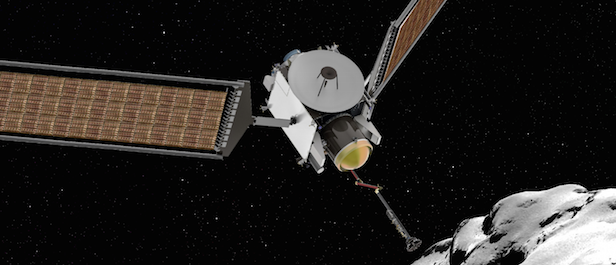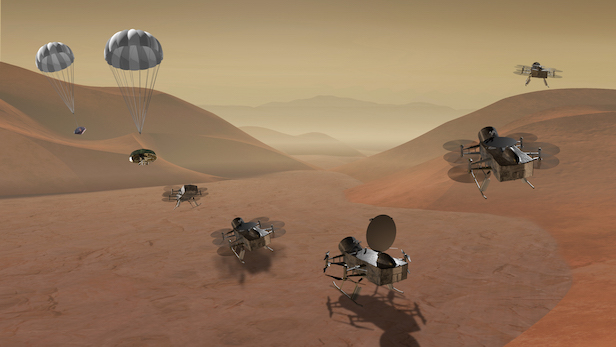NASA announces finalists for next robotic mission to explore the Solar System
The next New Frontier mission has been narrowed down to two final concepts

One of these missions will become the fourth space exploration mission making up NASA’s New Frontier portfolio. Image credit: NASA
NASA has selected two finalist concepts, out of a potential twelve, to invest in as they continue to explore the Solar System. Whichever one is chosen will be the fourth mission in NASA’s New Frontier’s portfolio, which has its launch planned for mid-2020s.
These two missions are both robotic missions, and one aims to sample a comet and return those samples. The other is a drone-like rotorcraft concept, which will explore the surface of Saturn’s largest moon, Titan. These concepts were announced on Wednesday 20 December 2017, after a thorough peer review process.
“This is a giant leap forward in developing our next bold mission of science discovery,” says Thomas Zurbuchen, associate administrator for NASA’s Science Mission Directorate in Washington. “These are tantalizing investigations that seek to answer some of the biggest questions in our Solar System today.”
The finalists are:
Comet Astrobiology Exploration Sample Return (CAESAR)
The aim of this mission is to journey to the previously studied comet, 67P/Churyumov-Gerasimenko, and return a sample back to Earth. Comet 67P has already had a robotic visitor in the form of ESA’s Rosetta spacecraft. This work would determine the comet’s origin and history, which could prove vital in understanding the history of the Solar System. The CAESAR mission would be led by Steve Squyres of Cornell University in Ithaca, New York, and led by NASA’s Goddard Space Flight Centre in Greenbelt, Maryland.

The CAESAR mission will collect a sample from the nucleus of a comet and return it to Earth. Image credit: NASA
Dragonfly
This creative concept consists of a drone-like rotorcraft that would be sent to the complex moon of Saturn, Titan. Dragonfly would explore the prebiotic chemistry and habitability of dozens of sites of the methane ocean world. The lead investigator for this mission is Elizabeth Turtle of Johns Hopkins University Applied Physics Laboratory (APL) in Laurel, Maryland, with APL also providing project management.
Both these missions will receive funding until the end of 2018 in order to grow and mature the concept. In the spring of 2019, NASA will select one of these projects to carry it thorough to the launch in 2020. The fourth mission of the New Frontiers portfolio will have a development cost cap of roughly £635 million ($850 million). This will join the list of previous missions, containing the New Horizons mission to Pluto and Kuiper Belt object known as 2014 MU69, the Juno spacecraft currently at Jupiter and OSIRIS-Rex, which will reach the asteroid Bennu and return a sample.
NASA has also selected two mission concepts that will receive technology development funds to prepare for future mission competitions. These include:

Dragonfly will fly to multiple locations of the surface of Titan, sampling material along the way. Image credit: NASA
Enceladus Life Signatures and Habitability (ELSAH)
The ELSAH mission concept will develop cost-effective techniques that limit spacecraft contamination. This idea would prove vital for life detection measurements made on cost-capped missions. The principal investigator is Chris McKay of NASA’s Ames Research Centre in California’s Silicon Valley, partnered with the managing NASA centre that is Goddard.
Venus In Situ Composition Investigations (VICI)
The VICI concept will continue to improve the Venus Element Mineralogy Camera, which will operate under the harsh conditions on Venus. More specifically, the instrument will use lasers on a lander to measure the mineralogy and elemental composition of rocks on the surface of Venus. Lori Glaze at Goddard leads this project.
Keep up to date with the latest reviews in All About Space – available every month for just £4.99. Alternatively you can subscribe here and make the most of our Christmas offer for a fraction of the price!




